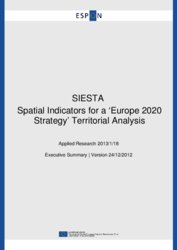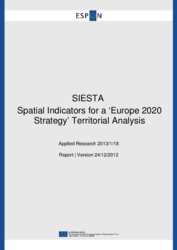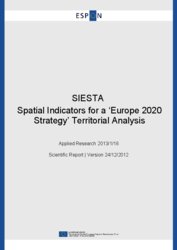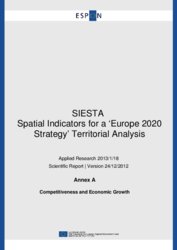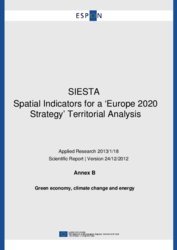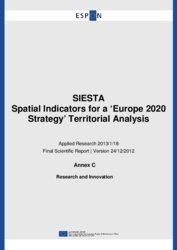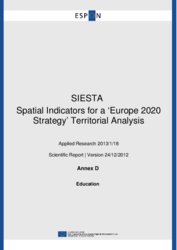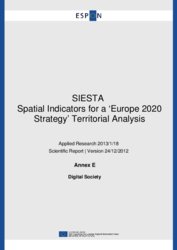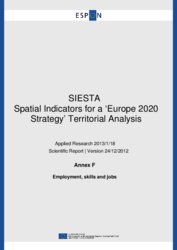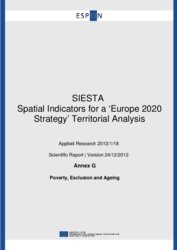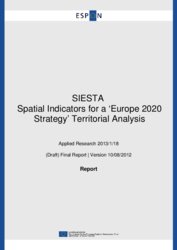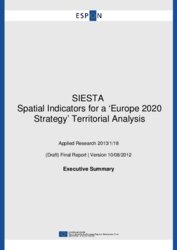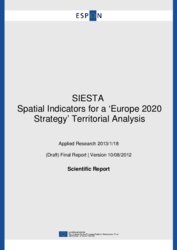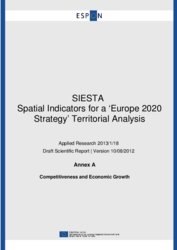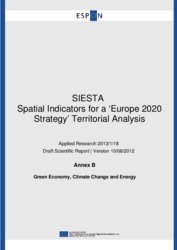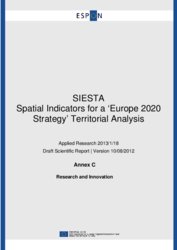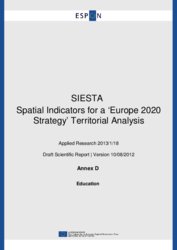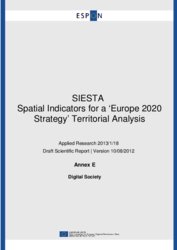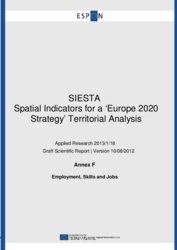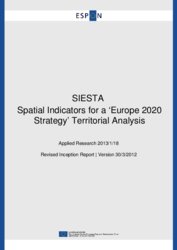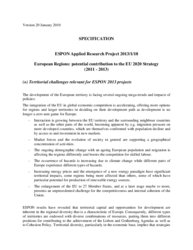SIESTA - Spatial indicators for a Europe 2020 Strategy Territorial Analysis
Thematic scope
In the Europe 2020 Strategy, launched on 3 March 2010 by the European Commission three key drivers for growth were identified and to be implemented through concrete actions at EU and national levels:
- Smart growth – fostering knowledge, innovation, education and digital society
- Sustainable growth – making our production more resource efficient while boosting our competitiveness, and
- Inclusive growth – raising participation in the labour market, the acquisition of skills and the fight against poverty.
Moreover, following the logic of the Territorial Agenda of the EU, orientations for policy makers should refer to the respective territorial development opportunities and the available options to mobilise these for the benefit of the cities, urban agglomerations and surrounding regions in question. In this respect, references to future policy options should take account of European Cohesion Policy orientations, in particular expressed in the Community Strategic Guidelines on Cohesion 2007-2013, the Fourth and Fifth Report on Cohesion, as well as (the debate on the) Green Paper on Territorial Cohesion.
Considering this policy context and the close link of this Strategy to territorial cohesion it is important to understand the territorial dimension of these initiatives and targets and Europe’s diversity. Furthermore, research is needed to identify the different types of challenges for regional development working to the Europe 2020 Strategy.
The aim of this project is to provide evidence on the territorial dimension of the EU2020 Strategy by identifying opportunities for different types of regions in relation to the targets and flagship initiatives set out in the Strategy. The results of this ESPON project are intended to be useful for policy makers at various scales in the process of identifying territorial interventions, for example at the scale of regions and local authorities and in the preparation of regional development strategies. The findings of this project furthermore will enable policymakers to have more in-depth monitoring and steering of the implementation of the strategy.
A place based approach is fundamental to effective implementation of the Strategy. Please read more about the main research areas and main results envisaged on the next page.
Policy questions
- What is the territorial dimension of the Europe 2020 Strategy?
- Which types of regions have what opportunities to reach the targets set and contribute to smart, sustainable and inclusive growth?
- What specific levers for development regions have in order to support the three pillars related to the EU2020 Strategy? And how can these opportunities and potentials can be more efficiently exploited?
- What is the current position (possible by using a ratio transformation) and recent trends of the European regions/cities in relation to the targets mentioned in the Europe 2020 Strategy?
- What opportunities and challenges do the European regions/cities have to support the various policy targets of the Strategy?
Lead Partner
University of Santiago de Compostela, Spain
Detailed information on the contracted project team can be found under Transnational Project Groups.
Sounding Board
Roman ROEMISCH, Austria
Pekka KANGAS, Finland
Budget: € 400.000
Project’s lifetime: June 2011– April 2013
Delivery of Reports
Inception Report: 02 December 2011
Draft Final Report: 8 August 2012
Final Report: 31 October 2012
Publishing
Reports will be published once they are approved by the ESPON Monitoring Committee
More information
Please contact the Project Expert at the ESPON Coordination Unit: Sandra DI BIAGGIO, e-mail: [email protected]
Main research areas
The aim of this project is to provide evidence on the territorial dimension of the EU2020 Strategy by identifying opportunities for different types of regions in relation to the targets and flagship initiatives set out in the strategy. In particular the following research areas are emphasized:
- Development of a regional breakdown for the indicators related to the targets and initiatives of the Strategy.
- Carry out an analysis of the territorial state and recent trends (1990 – present) of the opportunities and challenges of the European regions with regards to the objectives set in the Europe 2020 Strategy.
- Providing an extensive geographical coverage of data encompassing all countries participating in the ESPON 2013 Programme. The data situation for EU Candidate Countries and other countries of the Western Balkans will be assessed and reported.
- Give special attention to a relevant component of the project on data collection, data harmonisation and map making.
Main results envisaged
- New targeted evidence that in a solid, simple and easily understandable way communicates the opportunities, challenges and possible contribution of European territories to the policy objectives defined in the EU2020 Strategy.
- An Atlas that allows users to identify (1) which types of regions have what opportunities with regard to exploiting their territorial potentials in support of smart, sustainable and inclusive territories in Europe, and (2) which types of regions can be perceived as key drivers for European development and growth at various scales.
- An electronic version of the Atlas introducing dynamic and interactive elements in the maps that could help the reader/user to better understand the key message of each map.
